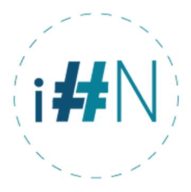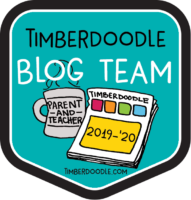The teaching brain has a lot in common with the learning brain. They both need space in working memory and to support that space they need background knowledge so they can take advantage of long-term memory and automaticity. Teaching is a cognitive skill. One of the main differences between a teacher’s brain and a student’s brain is the amount of background knowledge. Teachers need a high level of knowledge in the subject matter being taught and also a rich store of information about how to teach that knowledge.
(You are reading the ninth and final post in a series about cognitive science in your homeschool, click here for the introductory post and links to the other posts in this series.)
A good teacher must always be learning. Learning subject matter and learning how to teach that subject matter. Learning about themselves and how they can improve their teaching skills. How can homeschooling moms hope to become an expert at teaching every grade and every level? One way to ease the pain is by focusing on principles of teaching and learning how kids learn. Then make the curriculum be the expert. Make sure any curriculum you buy is written by expert teachers who understand not only the subject but how to teach it well. They need to understand how kids at that age think and what assignments fall within the realm of reality. What can kid that age typically understand, and how does the information need to be presented for them to be able to understand it?
Become an expert on what works in your home, what works for your child, and what is expected/typical behavior and development for kids the same age as yours.
In Your Homeschool
Keep a journal. Takes notes about what works for your kids, what doesn’t. What assignments do they struggle with?
Think about video recording a part of your day that constantly collapses. Does math always turn into tears? Record the lesson, both yourself and your child. Watch it later and observe. Try to be impartial. A frustrated child cannot learn, the upset emotions turn off the learning brain. Whatever you think your child should and could do needs to take second place to what your child actually CAN do and not only that but what they can do without it being so hard they collapse into an emotional mess.
I am not saying you can’t push them. But when you push them too far, they will actually stop learning. You have to find the sweet spot of pushing them just enough that they are learning at a good clip and not so much their brain shuts off.
When you have ideas about what to change, choose just one. If your video and journal are revealing your own week points, choose one small thing to change, and remember to record the results. Did that change have any effect? Write down your ideas of what needs to change and then pick just the most important one to implement first. Once you are confident in your ability to stick to that change you can add the next thing on your list.
This method will keep you from being overwhelmed. It will keep consistency in your home, which is very important for your kids. When kids know what to expect and what is coming next they are more confident and calm. You may also realize as you work through your list, that you really only need to change three small things. When we change too much at once we have no way of telling what actually helped. One small change at a time will reveal which changes were the magic bullet.
As teachers, one of our biggest, most important, and hardest jobs is finding balance. We have to find balance in our own lives. Balance in our knowledge, filling in areas where we are lacking. Balance in what and how we teach. Figuring out how to balance all these things is an intense game of cognitive juggling. Our working memories spend a lot of time being used a maximum capacity. To balance that demand, we must also rest. As teachers we set the tone for our students, only if we have achieved internal balance can we hope to maintain external balance in the classroom and the home.


